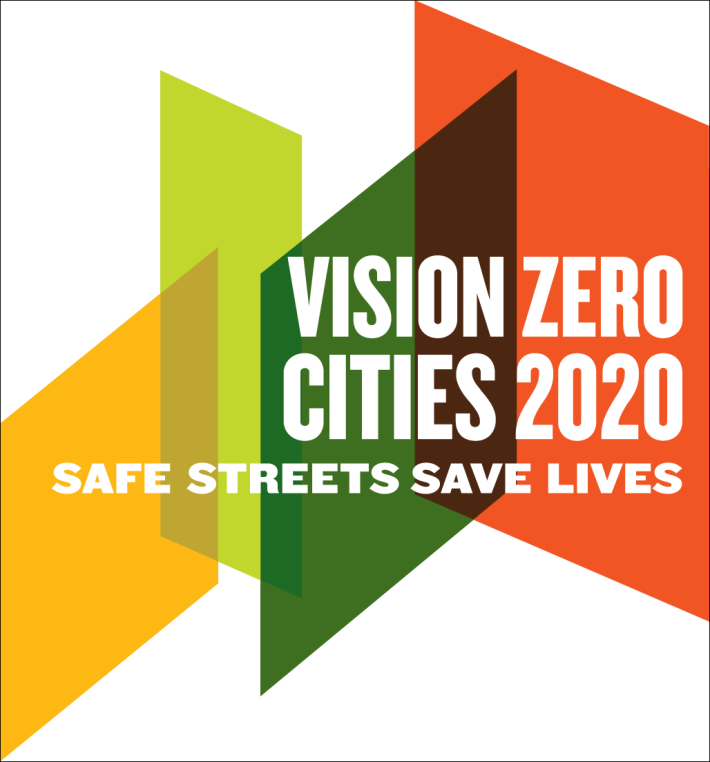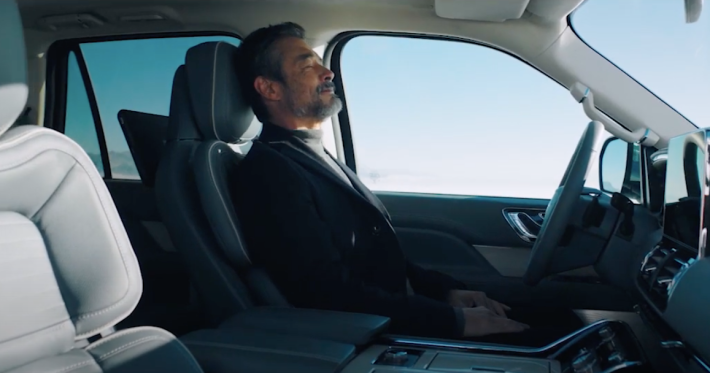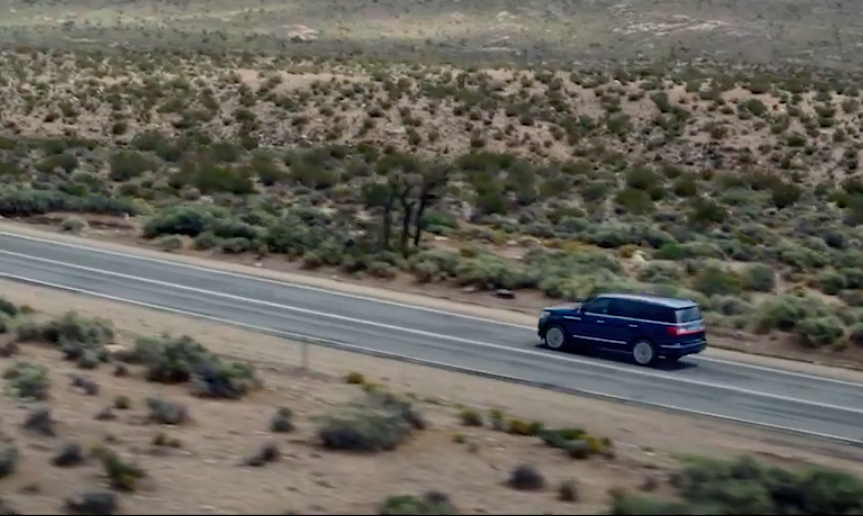This article will appear in Transportation Alternatives’ Vision Zero Cities Journal as part of the 2020 Vision Zero Cities Conference, which starts today and continues through Friday, Oct. 23. You can still register for the conference at visionzerocities.org.
For many years, I worked in the automotive sector of the advertising industry. Then, I started riding a bike with my kids to school and finally stopped drinking the car culture Kool-Aid.

But what I learned making and selling car ads has value. The Vision Zero movement could learn a lot from the marketing practices of the auto industry. As we seek to transform streets and drive traffic deaths down to zero, we can take cues from how cars are sold.
Car ads are targeted
Car ads arrive on our screens in a non-stop onslaught. These messages are impossible to avoid, appearing year-round in every possible media space and high visibility location with an almost unmatched reach and frequency. Now, obviously, the Vision Zero movement doesn’t have the same marketing machine supporting their goals, but at its core, car ads are telling stories, and storytelling can work at any scale. If advocates can adopt the storytelling techniques of the car industry, we can possibly provide effective counter-messaging to the automotive industry onslaught.
Commercials work. That is why brands spend millions of dollars producing and placing them every year. This is not rocket science. Commercials work because they use refined techniques to connect with their target audience, mining demographic and psychographic information to ensure they are providing messages that will resonate. The Vision Zero movement may not have the resources to obtain such specific data, but we do all have a general understanding of the mindset of the people we need to reach. We need to use this.
Consider how, right now, every brand is searching for a message relevant to COVID-19 — reminding customers that they are “there for them.” These brands are tapping into the ways that we are collectively experiencing a new way of life and the extremely challenging time so many of us are experiencing.
This is not about challenging how brands interact with their customers. It is about finding out how they do it so well, and the ways that the Vision Zero movement can learn from these brands’ thinking, and their sizable advertising research budgets.
With many cities reimagining their streets to adapt to a post-COVID world, this is an apt time to understand how the Vision Zero movement can relay effective messages that push for better biking, walking, and public transit — and not revert back to a car-centric “normal.”
Car ads are emotional

If we look at a recent Lincoln ad — “The Power of Sanctuary” — we find a message that of the home as a sanctuary, and that during difficult times, it is important to focus on what matters most — in this case, family.
Family and safety are the key themes communicated here, and in auto campaigns in general, due to how dangerous the act of driving really is. Car manufacturers know this and know that there needs to be constant reassurance that this aspect of driving is not only addressed but prioritized. To accomplish this, there is no better imagery to leverage than that of a child (in the case of the Lincoln ad, an infant in a crib). It is a universally relatable image and one that immediately cues in as a visual representation of vulnerability.
Hyundai used this same type of imagery in ads for its recent “Assurance” program. The visual of a dad pushing his young daughter on a swing with a voiceover: “Nothing is more important than family, especially in uncertain times.” Again, the message of safety and family is reinforced, connecting the car in our minds as a protective tool.
The Vision Zero movement should be invoking similar emotions to those brought out by the children in these ads — not to sell a product, of course, but to help shape the perception around the systems that will keep vulnerable road users safe. This idea is not at all new. We all know that “if it’s safe for a kid, it’s safe for everyone.” The question is this: How do we illustrate this as car ads do — in a manner that is universally relatable, emotionally evocative, and helping to forward the goals of Vision Zero?
This can be done using the same visual techniques that car companies have mastered. Instead of highlighting safety through the features of a car, car companies focus on what could be lost — and thus the threat of this loss is implied. In the same way, the Vision Zero movement can focus on what has been lost by the failed transportation systems that are in place, or what can be gained by returning the streets to people. We need less “this protected bike lane will increase ridership by X” (even though that data is extremely important) and more “this child can now have the way of life that we would all want for our kids.”
It is worth noting here that there needs to be a balance in the messaging. When invoking children, our message should never feel extreme or desperate. Instead, we want to imply universally good feelings. For example, instead of a “Won’t someone please think of the children!” vibe, we will do better to land on an image that implies “Look at this child’s joy!”
Music is also an extremely powerful tool for supporting the emotion your visuals are trying to create and can have a vital effect on in the way a message is received. Familiarity is important, especially when connecting with an audience that might not share the same beliefs, and music is the great bridge. Car commercial scores are extremely emotive. Turn off the visuals and you probably can guess the general tone of the spot. Without a car commercial budget to purchase the rights to mainstream music that is built into our pop culture consciousness, you can still mine stock music that feels familiar or supporting a local musician to help create the tone you are going after.
Car ads are simple
Simplicity is key, and car ads do this well. Now, not all car ads are simple, but for brand and specific topical campaigns, they execute this quite efficiently. Nothing is overcomplicated, too busy, or trying to hit multiple touchpoints in hopes of catching multiple target demographics.
Let’s look back at that Lincoln ad. It is paced according to its message — so even though there is no specific language referencing the current crises, the script is crafted well enough that you completely understand the angle. This nuance makes the message appear especially delicate and respectful. In general, there are likely less than 100 words in most car ads, but an amazing amount of time goes into developing the copy. It is an art form that is worth paying attention to when developing creative.
Similarly, the Hyundai ad uses only running footage and the shots of the family. These basic visuals give you all the cues you need to understand what they are communicating without even hearing the voiceover, which is important and an added bonus in an age of digital sharing and muted content.
What is the lesson of all this? Keep it simple. Despite the piles of Vision Zero statistics, and all the transformative environmental, economic, and social impacts of complete streets that you may want to scream from the mountaintops, it is important to be selective in the message we are trying to communicate — especially right now. We lose our audience when we pile on all the benefits of our goals. Instead, remember who your target audience is, choose one avenue, and do it well. A singular, simple message is better than watering down when you have to say with multiple pieces of information, especially in the advertising space, where information and facts are often met with apprehension.
Car ads are relatable
The Lincoln and Hyundai ads above share a relatable theme, because we are all going through the challenges of COVID-19 collectively, so thematically this obviously works for a wide audience. The visual makeup for the Hyundai ad is of an average family sharing time together, which of course will hit home for their defined target market and connect with many beyond.
This is a good example of why it is so crucial to define our intended audience, so we can tailor the creative appropriately, and deliver effective communication. For the Vision Zero movement generally, we have to remember to try and highlight our commonalities and to avoid being too polarizing. It is really difficult to convince people to support systems that they have been told are problematic to their life and benefit people who they cannot relate to — but this is often what people have been told about bike lanes and efforts to reduce car traffic. While we can thank years of car-centric policy, poor municipal leadership, endless rhetoric, and false narratives for so many unknowingly adopting these attitudes, we can also take control of this message.
This is why re-humanizing people on bikes, and really anyone that is not in a car, is the priority.
Before we strategize on how to be more relatable and therefore shift perceptions, let’s look at how people on bikes are sometimes seen. We all accept that kids ride bikes, in fact, we all love this, and it is a source of great nostalgia as part of the hallowed coming of age tale often celebrated in pop culture. But those kids get older, obtain their driver’s licenses, and grow up to be good, hard-working, car-driving Americans. If these children continue to cycle into adulthood, then they are suddenly fit into a handful of negative stereotypes: Urban Elitist, Hipster, Militant Activist, Granola Hippie, Lycra Road Warrior — pick your poison.
There is such a disconnect between the narratives of a child and adult on a bike and one that is an uphill battle to bridge, to say the least, but if we can tap into some of those initial positive nostalgic emotions tied to streets that felt safe for children to bike, and attribute them to our current communications, we have a chance at bridging this gap. If we can connect bicycling as adults to bicycling as children, we can find common ground and reshape the preconceived notions of what a “cyclist” really is. Once our target audience can see themselves in our messaging, the underlying policy and planning can be presented to a more open-minded group.
Learning from the enemy
In 2019, I put these ideas to the test. I worked with the transportation advocacy organization Transportation Alternatives to create a series of “car style” advertisements about bicycles.
Using the techniques discussed in this article, the ad — titled “Forgotten” — had a goal of inspiring people to reconnect with their forgotten bicycles. In the early days of the COVID-19 pandemic, when traffic was down and streets were being opened up, safe cycling became a real option for so many, including those who had not ridden a bicycle in a long time. (See it below.)
Targeting that broad audience, we aimed to keep the tone light and somewhat whimsical. The story told in the ad frames the bicycle as an old friend who was just waiting to be sought out again. Nothing heavy-handed, data-driven, or hard-hitting here. Rather, this is a creative story that would be familiar to viewers, that the bicycle is there simply to be enjoyed. The final line of copy hints at nostalgia, and more positive carefree days of the past that the bicycle may have once brought.
This is a prime example of how, as the Vision Zero movement spreads around the world, we have the power to help adults rediscover their childhood relationship with their streets, and inspire them to act for their children, to help take back what is rightfully theirs. With effective communications, we can bring even more people into the movement. Here's one way:
This article outlines just a few techniques that we can use when developing ads to target a broader audience for the Vision Zero cause. Of course, there is a place for a variety of different creative styles, messaging, and content to be showcased depending on the goals and the audience. As long as we keep our message relatable, seat what we have to say in emotions instead of statistics, and keep it simple, there are so many stories to tell as we advocate for safer and healthier communities for everyone.
Tom Flood has spent 15 years in marketing/advertising and many of those producing car advertisements. Today produces a variety of content through Rovélo Creative. Follow him on Twitter @tomflood1.






